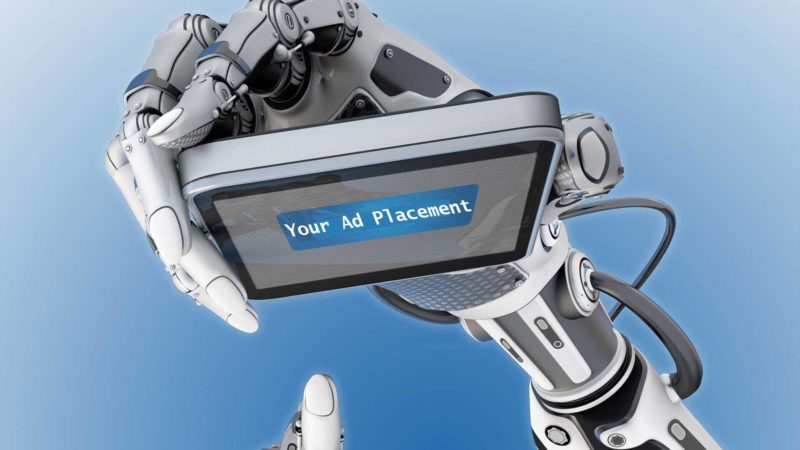The robots who will warm your heart — and drive your branding
Columnist David Rodnitzky looks into the future of branding in a world that's being increasingly dominated by AI, machine learning and other tech.

I’m not a classically trained marketer, so I don’t really understand how branding works. Why do people sign up for a credit card because Charles Barkley appears in a TV commercial? How does Alfa Romeo sponsoring the Super Bowl halftime show increase car sales? And why does my public utility have to brand itself at all?
None of this makes much sense to me, and yet branding — when done correctly — clearly drives immense value for companies. The right branding convinces us to do crazy things, like pay more money for a commodity (salt, sugar), or get a new iPhone every 18 months.
The flip side of branding successes, however, is that a lot of branding fails. I’m not talking about huge brand blunders (like Pepsi’s attempt to channel the Black Lives Matter movement via a Kardashian), but rather brand dollars that are simply ineffective.
Take the beer companies, for example. Budweiser spends billions every year on brand advertising, and yet its market share continues to plummet. Even iconic branding campaigns — like the “Old Spice guy” – often have minimal if any impact on actual sales.
More and more, there is science behind brand campaigns — focus groups, surveys, heat maps, consumer panels — but let’s face it, branding is still mostly a creative, as opposed to quantitative, business. After all, agencies don’t win Cannes awards for growing market share; they win awards for their cleverness. (Indeed, the Cannes Lions describes itself as the “festival of creativity,” not the “festival of effectiveness.”)
It strikes me that the balance of power in branding will eventually shift from the creatives to the quants. Awards don’t pay the bills; selling more products does.
I envision a future where brand campaigns combine iterative testing, machine learning and personalization to drive predictable and measurable results. Eventually, technology will be the driving force behind brand campaigns, with humans merely moving the levers and making sure the wheels don’t come off.
The inherent problem with branding campaigns is the upfront cost and the unpredictable return. When a beer company launches a new branding campaign, the cost is well into the millions of dollars before the first ad is run. This includes expenses like market research, strategy, ad production and media buying. Even the most affordable TV ad is going to cost several hundred thousand dollars to film.
So how will that change in the future? A few predictions:
Agile, iterative testing of everything
Using machine learning and online consumer panels, brands will be able to test new messaging ideas rapidly. No need to spend a few million dollars on a campaign that will fall flat — thousands of brand message variations can be tested in a matter of days, and the winner can be inferred with high confidence.
Moreover, as computer-generated imaging (CGI) improves, brands will be able to create dozens of TV commercial proof-of-concepts for less than the price of one ad today. Perhaps the final ad will be a film with real people in real locations, but not before CGI testing has ferreted out a winning creative.
Measurement beyond ‘lift’
Rather than settling for murky, non-revenue correlated metrics like “awareness” and “lift,” brand campaigns will be measured by actual revenue and profit improvement.
Whether this will be known as “return on attention” or “revenue per lifted consumer,” or something else, probabilistic and deterministic attribution will enable advertisers to track every impact of their brand campaigns, from in-store purchases to phone calls to multi-device orders.
Programmatic media buying across all channels
Buying media online is almost entirely programmatic (ad exchanges, AdWords, Facebook advertising). To date, traditional advertising (TV, radio, print, out-of-home) has resisted programmatic buying, but that is changing.
Campaigns created by Artificial Intelligence (AI)
It sounds crazy, but someday the best brand campaigns will be generated by computers. Just as Google programmed a computer to “invent a cat,” computers can now crunch petabytes (or any large number) of data to answer theoretical questions like “what’s a cat” or “what message will get people to buy more soda” without any human input.
Some believe this technology already exists — pointing to an obscure Big Data company that allegedly created 175,000 different Facebook ad variations for Donald Trump’s presidential campaign. Whether it exists now or not is immaterial; in the near future, brand marketers will be able to mine data to determine optimal strategy.
Ultimately, I don’t believe that branding will be 100 percent driven by AI, CGI, machine learning, attribution and multivariate testing. I think there will still be a role for the creative and the brand strategist. The difference, however, will be that everyone working on a brand campaign will need to be schooled in data and held accountable to results. And these brand marketers will have to learn to work alongside the branding robots that technology is rapidly deploying.
Opinions expressed in this article are those of the guest author and not necessarily MarTech. Staff authors are listed here.
Related stories
